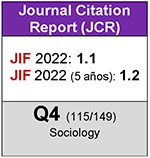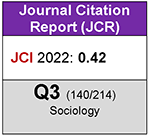Household sampling designs: differences and similarities between probability sampling and route and quota sampling
DOI:
https://doi.org/10.5477/cis/reis.171.23Keywords:
Quota Sampling, Random Route Method, Random Sampling, Multistage Cluster Sampling, Sampling MethodsAbstract
This paper compares the representation quality of three face-toface household surveys. Two of them used probability samples and the other one selected the ultimate sampling units by using random route and quota sampling, with non-responses resulting in ‘automatic’ substitutions. The hypothesis to be tested is that random route sampling and quota sampling (with substitution) provide similar representative quality as home sampling (without substitution) based on the local population register. Marked differences were found in education level in the probability samples, where the deviations exceeded 25%. A different picture emerged when comparing employment variables, where quota sampling overestimated both the labour force participation rate (by 2.5% points) and unemployment rates (9.5% points).
Downloads
Downloads
Published
How to Cite
Issue
Section
License
Copyright (c) 2024 Revista Española de Investigaciones Sociológicas

This work is licensed under a Creative Commons Attribution-ShareAlike 4.0 International License.
Permite Compartir — copiar y redistribuir el material en cualquier medio o formato, Adaptar — remezclar, transformar y construir a partir del material para cualquier propósito, incluso comercialmente.








